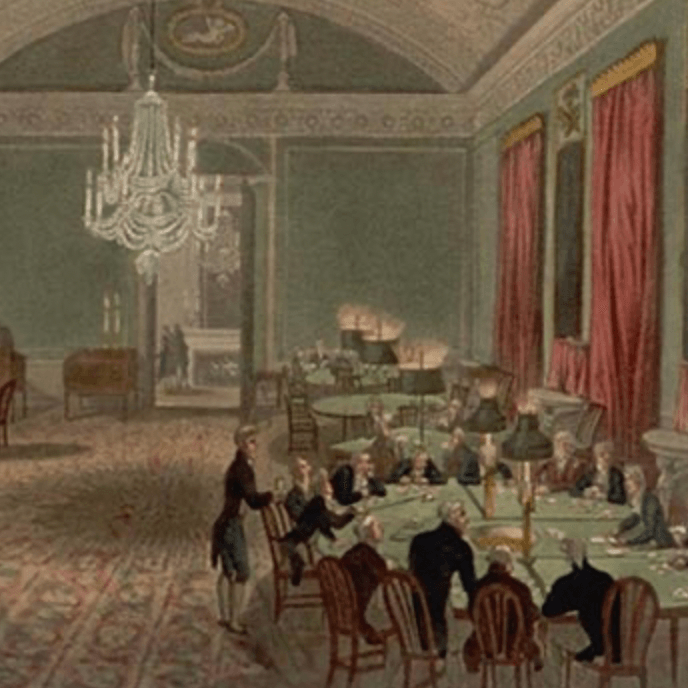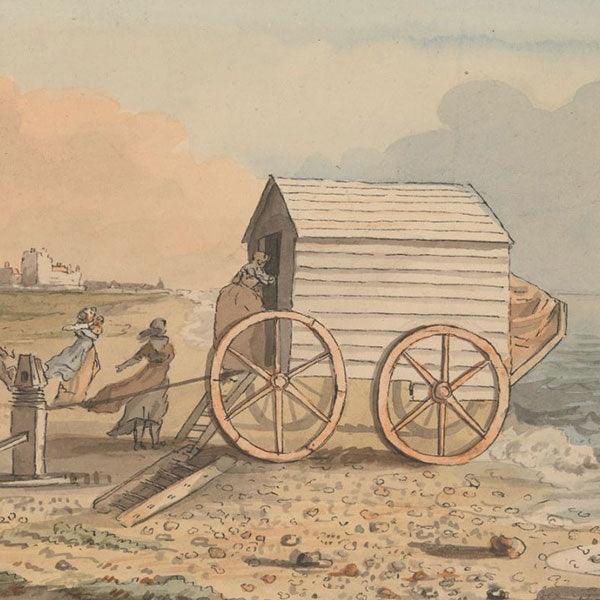Love, Romance and Courtship

Following on from our discussion earlier on in the week about the harp-lute, we thought it interesting to consider an etching by caricaturist James Gillray, titled Harmony Before Matrimony, which features a young lady playing a full size harp. Gillray was born in Chelsea, London in 1756 and began publishing his works in social satires between 1792 and 1810. Many of his works are now currently held by the National Portrait Gallery and he is often considered to be one of the very best caricaturists to have existed, alongside William Hogarth.
Jane's novels are, arguably, not necessarily about romance. Romance certainly features in her novels and she does it exceedingly well, but we could consider social realism, gender inequality and moral struggle as her primary areas of focus. Jane uses romance to explore many of these themes, and Gillray's etching is an interesting social satire of courtship and nineteenth century customs.
The piece itself is a hand coloured etching on paper, measuring roughly 26cm × 36 cm, published in 1805. It depicts a young lady and a young gentleman engaged in conversation, presumably courting one another, whilst she sits playing the harp. They are sat in the middle of a luxuriously decorated room, featuring several pieces of pottery, an ornate carpet and a painting above their heads in a fine, ovular frame.
Gillray employs much iconography synonymous with love and romance. The painting depicts Cupid, the ancient god of desire, attraction and affection, looking upon a pair of doves. The vase on the left side of the piece holds two roses, the carpet is decorated with a repeating rose motif, and the two wall sconces either side of the painting on the wall feature decorations depicting Cupid's arrows and two crossing flames. In addition to his use of iconography, Gillray alludes to the customs of courtship by presenting the young lady as playing an instrument whilst she entertains the gentleman, much like many young ladies were instructed to do during this period in order to cultivate loveliness and enhance their femininity.
The satire of this scene is only brought out when directly compared to its accompanying piece, titled Matrimonial Harmonics. In this etching, the two doves have turned into two caged parakeets, the delicate harp into a piano, and the general air of the setting has become dingier, heavier and less airy. The flames in the fireplace roar menacingly, rather than burn gently, and both the lady and the gentleman have become visibly less 'refined'. The title indicates that the couple have progressed through courtship and into marriage and although they still sit within close proximity of one another, they are turned away from one other without an attempt to engage in the same activities.

There are, of course, so many elements of these two etchings that we could delve into and explore further. But at their core, they work together to satirise the 'high', elevated customs of courtship during the late eighteenth and early nineteenth century. Gillray suggests that marriage, even when pursued in the 'purest' or on the most agreeable terms, can become rather dismal and disagreeable.
Coming full circle, we can return then to our earlier thoughts about Jane's use of romance in her novels. Several of her characters are rather quite successful in their romantic endeavours and appear to have struck gold, in terms of matrimonial contentment. However, there are several who are not quite so fortunate. One immediately thinks of the detestable Mr Henry Crawford and his attempts to woo Fanny Price, with all the outward civilities of courtship to try and hide his dubious morality.
If this blog has got you thinking about Valentine's Day, which is fast approaching, take a look at our specially curated Valentine's Day Offers!
If you don't want to miss a beat when it comes to Jane Austen, make sure you are signed up to the Jane Austen newsletter for exclusive updates and discounts from our Online Gift Shop.




1 comment
I believe a better interpretation is that the young man is singing from the score he holds while she plays.
Myrtle
Leave a comment
This site is protected by hCaptcha and the hCaptcha Privacy Policy and Terms of Service apply.